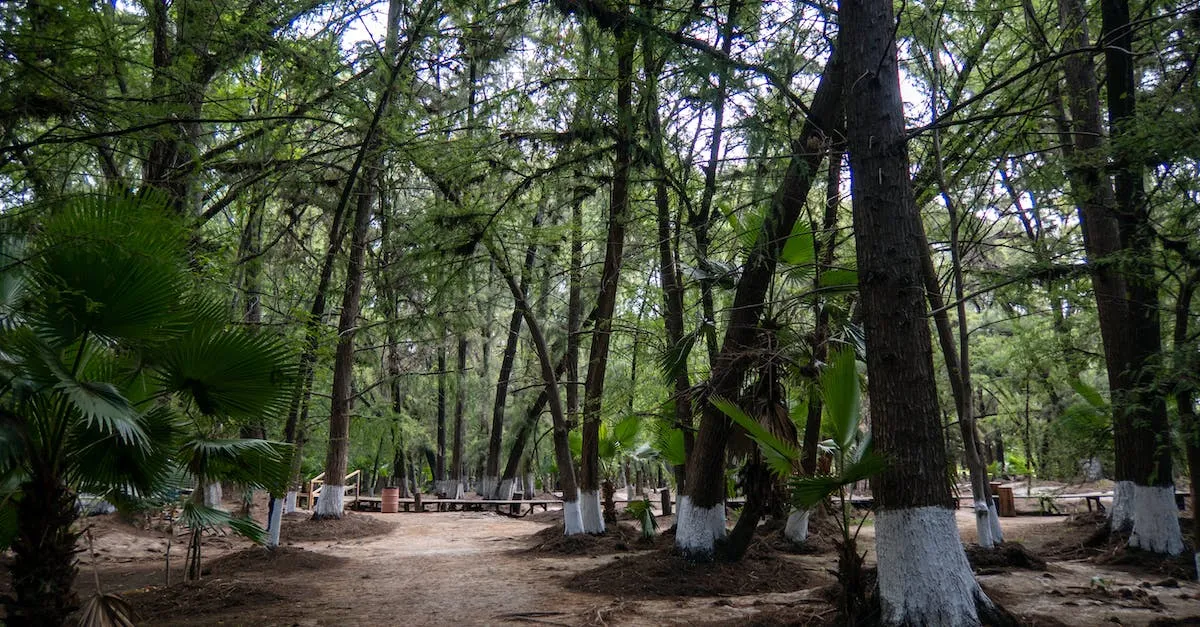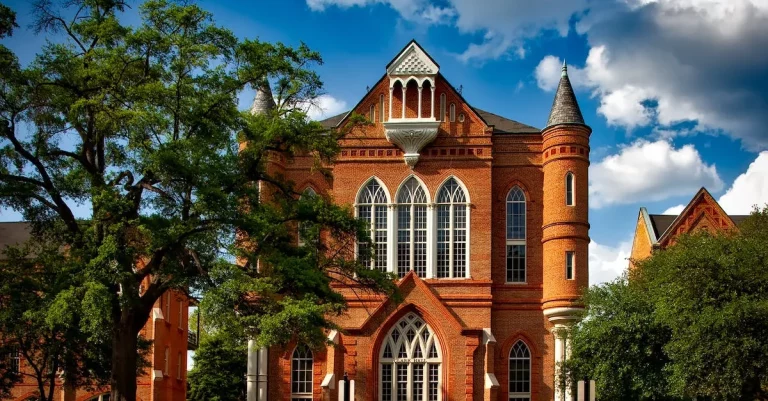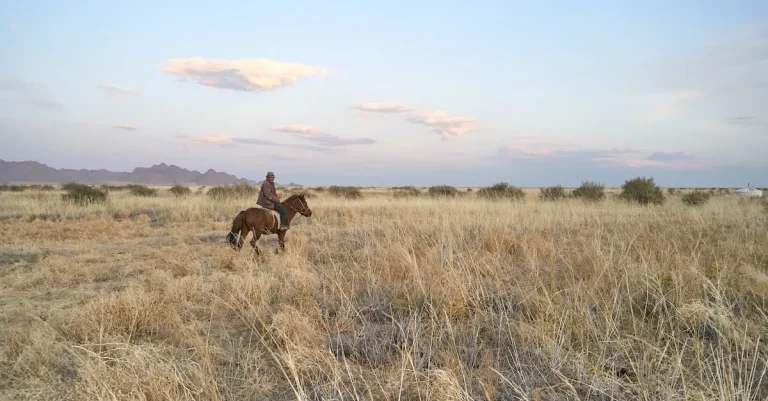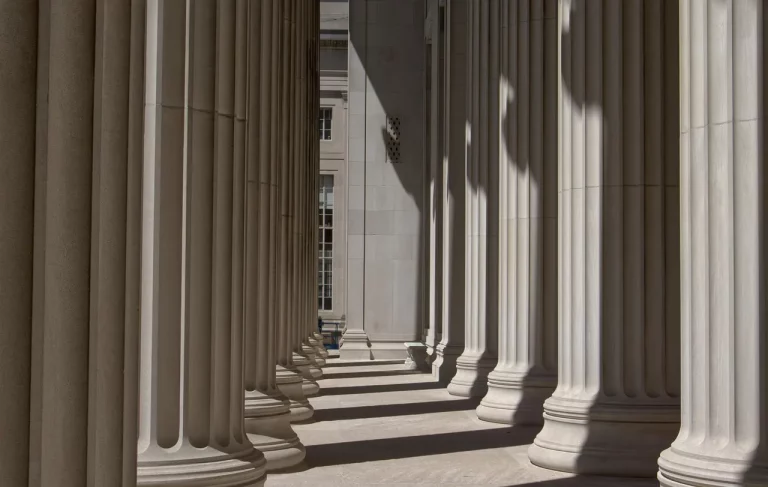Do Trees Lose Their Leaves In Florida?
As temperatures start to drop across much of the United States, vibrant fall foliage emerges in areas like New England. But what about further south in the Sunshine State? Do trees lose their leaves in Florida? If you’re short on time, here’s a quick answer to your question: Most trees in Florida do not lose their leaves in winter like trees in northern states. However, some deciduous trees native to Florida do shed their leaves for a brief period during the cooler winter months.
In this comprehensive guide, we’ll explore how Florida’s warm climate impacts trees’ growing cycles. We’ll look at which species do drop leaves in winter and why. And we’ll discuss the exceptions – tropical and subtropical trees that retain their leaves year-round.
Florida’s Warm, Subtropical Climate
Florida, known for its beautiful beaches and sunny weather, enjoys a warm, subtropical climate. This unique climate is influenced by its proximity to the Gulf of Mexico and the Atlantic Ocean, resulting in high humidity and mild winters.
Winter temperatures
While most states in the United States experience cold winters with freezing temperatures and snow, Florida is a pleasant exception. The state’s winter temperatures rarely drop below 50 degrees Fahrenheit (10 degrees Celsius) in most parts, making it an ideal destination for those seeking warmer weather during the winter months.
The warm winters in Florida contribute to its reputation as a popular tourist destination. Snowbirds, as they are affectionately called, flock to the state to escape the colder climates up north and enjoy the milder temperatures that Florida offers.
Rainfall patterns
Florida’s warm climate is also characterized by distinct rainfall patterns. The state experiences a wet season during the summer months, with frequent afternoon thunderstorms and heavy rainfall. These afternoon showers help cool down the temperatures and provide much-needed relief from the humidity.
On the other hand, Florida’s dry season occurs during the winter months when rainfall is significantly reduced. This drier period allows residents and tourists to enjoy outdoor activities without the worry of rain disrupting their plans.
Growing season
One of the advantages of Florida’s warm, subtropical climate is its extended growing season. With mild winters and abundant sunshine, the state provides an ideal environment for a wide variety of plants and trees to thrive.
The longer growing season in Florida allows for the cultivation of tropical and subtropical plants that would struggle to survive in colder climates. Palm trees, citrus fruits, and exotic flowers are just a few examples of the diverse plant life found throughout the state.
It’s important to note that while Florida’s climate is generally warm year-round, there are variations in temperature and weather patterns across the state. Coastal areas tend to be slightly cooler due to the moderating influence of the ocean, while inland regions may experience more extreme temperatures.
Deciduous Trees That Lose Leaves
When people think of Florida, they often picture lush green landscapes and palm trees swaying in the breeze. However, there are actually several types of deciduous trees in Florida that lose their leaves during certain times of the year.
These trees provide a beautiful display of color in the fall and can be found throughout the state.
Oaks
Oaks are a common type of deciduous tree found in Florida. There are several species of oak trees that can be found in the state, including the Southern Red Oak, Water Oak, and Live Oak. These trees typically lose their leaves in the late fall or early winter, but the exact timing can vary depending on the specific species and local climate conditions.
Oak trees are known for their strong and durable wood, making them a popular choice for furniture and construction.
Maples
Maple trees are another type of deciduous tree that can be found in Florida. While maples are more commonly associated with colder climates, there are a few species of maple trees that thrive in the warmer temperatures of Florida.
The Red Maple and Silver Maple are two examples of maple trees that can be found in the state. These trees typically lose their leaves in the late fall, but the exact timing can vary depending on local conditions.
Maple trees are known for their vibrant foliage in the autumn, with leaves turning shades of red, orange, and yellow.
Sweetgum
The Sweetgum tree is a deciduous tree native to Florida. It is known for its distinctive star-shaped leaves and spiky fruit balls that are often found on the ground beneath the tree. The leaves of the Sweetgum tree turn a vibrant red, orange, or yellow in the fall before they eventually drop.
These trees typically lose their leaves in the late fall or early winter.
Dogwood
The Dogwood tree is a small deciduous tree that can be found in Florida. It is known for its beautiful flowers that bloom in the spring and its vibrant foliage in the fall. The leaves of the Dogwood tree turn shades of red, purple, or orange before they eventually drop.
These trees typically lose their leaves in the late fall.
Elms
Elm trees are another type of deciduous tree that can be found in Florida. While they are not as common as some other types of deciduous trees in the state, there are still a few species of elms that thrive in Florida’s climate.
The American Elm and Slippery Elm are two examples of elm trees that can be found in the state. These trees typically lose their leaves in the late fall or early winter.
Evergreen Trees That Keep Leaves
While many people associate Florida with palm trees and tropical foliage, there are actually several types of evergreen trees that keep their leaves year-round. These trees provide shade, beauty, and greenery throughout the year, even in the warm Florida climate.
Palms
Palms are perhaps the most iconic evergreen trees in Florida. With their tall, slender trunks and large, fan-shaped leaves, they bring a touch of the tropics to any landscape. Some common palm species found in Florida include the Sabal palm, the Coconut palm, and the Queen palm.
These trees are known for their resilience and ability to withstand high winds and hurricanes.
Pines
Another type of evergreen tree commonly found in Florida is the pine tree. These trees have long, needle-like leaves that stay green all year. Some popular pine species in Florida include the Slash pine, the Longleaf pine, and the Sand pine.
Pines not only add a natural beauty to the landscape but also provide valuable timber resources for the state.
Live oak
The Live oak is a majestic evergreen tree that is native to Florida. It has broad, leathery leaves that stay green throughout the year. Live oaks are known for their sprawling branches and can reach impressive sizes.
They are often used as shade trees in parks and residential areas, providing a cool respite from the Florida sun.
Magnolia
The Magnolia tree is another evergreen species that thrives in the Florida climate. It has glossy, dark green leaves and large, fragrant flowers. Magnolias are often planted for their ornamental value and can be found in many gardens and landscapes throughout the state.
Redbay
The Redbay tree is a native evergreen tree that is found in the coastal areas of Florida. It has thick, leathery leaves that are dark green and shiny. Redbay trees are important for wildlife, as they provide food and shelter for various species.
Unfortunately, these trees have been impacted by a disease called laurel wilt, which has caused a decline in their population.
Why Do Some Trees Lose Leaves?
It is a common misconception that all trees lose their leaves during the fall season. However, this is not the case for all trees, especially in regions with warmer climates like Florida. So, why do some trees lose their leaves? Let’s explore the reasons behind this phenomenon.
1. Prevent Water Loss
One of the main reasons why trees lose their leaves is to prevent water loss. During dry seasons or droughts, trees in Florida may shed their leaves to conserve water and reduce moisture evaporation through their leaves.
By shedding leaves, trees minimize water loss and ensure their survival in arid conditions.
2. Conserve Energy
Another reason why some trees lose their leaves is to conserve energy. Leaves are responsible for photosynthesis, the process by which plants convert sunlight into energy. In regions with limited sunlight, such as during the winter months, trees may shed their leaves to conserve energy since there is not enough sunlight available to sustain the photosynthesis process.
By shedding leaves, trees redirect their energy towards other essential survival functions.
3. Protect from Cold Damage
In colder regions, trees lose their leaves as a protective measure against cold damage. However, in Florida, where the climate is generally warm, the need for this protection is not as significant. Therefore, the majority of trees in Florida are evergreen, meaning they retain their leaves throughout the year.
This is because the warmer temperatures in Florida do not pose a threat to the trees, allowing them to maintain their leaves and continue photosynthesis year-round.
While some trees in Florida may lose their leaves, it is important to note that the majority of trees in the state are evergreen. This is due to the favorable climate that allows them to thrive and retain their leaves all year long.
To learn more about the specific tree species in Florida and their leaf behavior, you can visit the Florida Forest Service website.
When Do Trees Drop Leaves in Florida?
Contrary to popular belief, trees in Florida do lose their leaves, but the timing varies depending on the specific tree species. While many trees in Florida are evergreen and retain their leaves year-round, there are several deciduous species that shed their leaves during certain times of the year.
January and February
In Florida, the majority of deciduous trees lose their leaves during the months of January and February. This coincides with the state’s mild winter season, when temperatures are generally cooler and daylight hours are shorter.
During this time, trees enter a period of dormancy, and shedding their leaves helps conserve energy and prepare for new growth.
Some common deciduous tree species in Florida that experience leaf drop during this time include the Southern Live Oak (Quercus virginiana), Sweetgum (Liquidambar styraciflua), and Crape Myrtle (Lagerstroemia indica).
Brief Leafless Period
While deciduous trees in Florida do experience a period of leaf drop, it is important to note that this period is relatively brief compared to regions with more distinct seasons. In Florida, the leafless period may last only a few weeks before new growth begins to emerge.
This shorter leafless period is due to the milder winter climate in Florida, which allows trees to rebound quickly and start producing new leaves. The warmer temperatures and longer days in Florida promote faster growth and recovery compared to colder climates.
New Leaves Grow Quickly
Once the leafless period ends, Florida’s deciduous trees quickly sprout new leaves. This rapid growth is facilitated by the favorable climatic conditions, including ample sunlight and warm temperatures throughout the year.
The new leaves not only provide shade and protection for the tree, but they also play a crucial role in photosynthesis – the process by which trees convert sunlight into energy. With the abundance of sunlight in Florida, trees have the ideal conditions to produce an ample supply of leaves and maintain their vibrant green foliage.
Conclusion
While wintry scenes with bare trees are rare in Florida, some native deciduous species like oaks, maples and dogwoods do shed their leaves for a short period in January and February. The warm climate quickly coaxes new leaves back out though. Most tropical and subtropical trees retain their leaves year-round, giving Florida its signature green landscapes even in winter.
Understanding how Florida’s climate impacts trees can help you appreciate seasonal changes in foliage across the state. You may notice subtler shifts, like leaves changing color or dropping for a couple weeks. But majestic palm trees and evergreen pines continue providing lush greenery throughout the winter.








